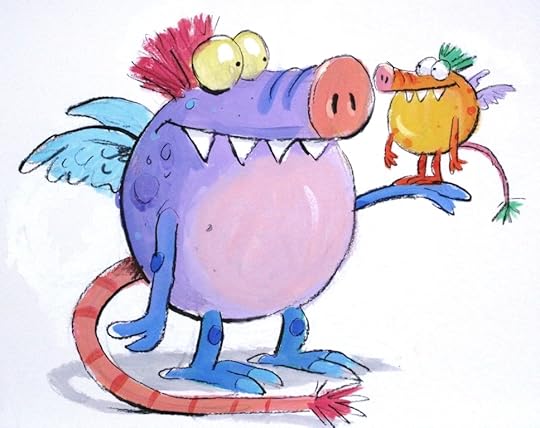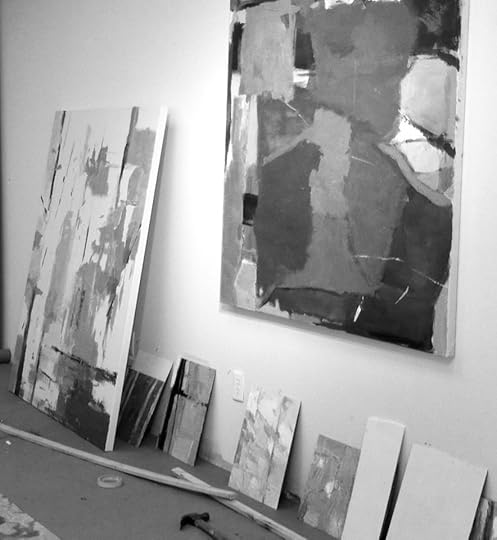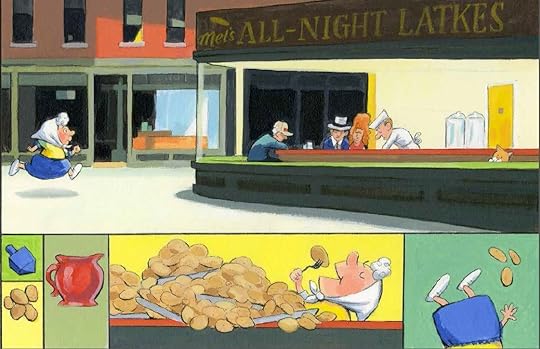David Slonim's Blog, page 2
September 1, 2014
Judging Criteria for Art Shows
The judging of art shows is a crap shoot. You never know what to expect. I’ve heard horror stories, as you probably have. Here are a few true examples:
A judge eliminated all landscapes on principle.
Another one ruled out any painting with the color green.
A judge was coached by the show committee (which hired him) to give awards to the paintings that had the best chance of selling, since it was a fund raising event. (I’ve heard the same story from several judges over the years).
But even if you leave out the extreme examples of behind-the-scenes art show nonsense, judging art remains highly subjective. In many cases, judges simply gravitate toward work that appeals to their personal taste. So the award-winning work all ends up looking like the judge could have produced it. This is more than unfortunate. It is stifling to the creative impulse, and teaches you nothing about how to improve your work in the future.
So what can be done?
When I judge a show, my goal is to be as objective as possible. I want to give awards to the best work, not to the work that looks most like my own. I created a checklist using numerical values to evaluate paintings, similar to the process used to judge disciplines such as diving, gymnastics, or debate. The subjective element is balanced as much as possible by a set of objective criteria that can be given a numerical value.
The numbers don’t lie!
This checklist is just one guy’s attempt to be fair. It can be improved. But it’s a starting place.
Ok, here is a judges statement followed by the checklist. If you have any suggestions for modifying or improving the checklist, please let me know. If you have your own that you are already using, feel free to post a link so others can check it out.
…………………………………………………………………………………………………………………………………………………………………
Judge’s Statement
Nobody makes a picture or sculpture and walks away from it without saying something about it, good or bad. The creative process always ends with evaluation. In the beginning, God declared creation to be “very good. We do the same thing all the time. Even a toddler will show scribbles to a parent in order to get feedback. The last time you finished making something, what went through your head? What came out of your mouth? We can’t help ourselves.
So what standards are we going to use to evaluate our artwork? How can you judge your own work in a way that will help you improve? How can you offer feedback to a fellow painter that will be based on more than personal taste?
My focus as the awards judge was on the arrangement or design of the entire artwork. Did the artist create a harmony of form that conveys one visual idea? I looked at the elements of design- line, shape, space, value, and color - in light of universal principles of design- hierarchy, rhythm, balance, unity.
Each contender for awards was evaluated using this checklist. Awards were given based on the numerical scores. You may not agree with all the selections, but you can be sure the choices were not made on a whim. And more importantly, if you evaluate your own work using fundamental principles of good design, you will know where the next step on your creative journey lies.
David Michael Slonim
………………………………………………………………………………………………………………………………………………………………
(If the checklist below is too small to read easily, you can click on it to see a larger file)

August 22, 2014
I LOATHE YOU Character Studies
- Linus Pauling, (1901-1994), American Chemist and Biochemist, winner of the Nobel Prize for Chemistry
Here are some of the many character studies I did for my book I LOATHE YOU:
Stacks of drawings piled up around the studio.
Finally I came up with this purple-gourd-pig-snout thing with wings. I thought surely this was IT:
I was so excited I even sculpted it:
But the editorial team at Simon & Schuster said no. Try again. The pig snout was too much.
Here’s the approved character design:
Next it was time for color studies. Here is a small fraction of the color combinations I tried and tested on friends and family:
And at last the final character:
I tell kids every time I speak to school audiences,
“A professional artist isn’t someone who gets it right on the first try.
A professional is someone who is willing to keep trying until it’s right.”

August 12, 2014
Motherwell on Connecting

“What could be more interesting, or in the end, more ecstatic, than in those rare moments when you see another person look at something you’ve made, and realize that they got it exactly, that your heart jumped to their heart with nothing in between?”
- Robert Motherwell

August 8, 2014
Pissaro on Being Understood
- Camille Pissaro
[John Rewald, ed., Camille Pissaro: Letters to His Son Lucien, Boston: MFA Publishing, 1958, 2002]
I need to remember this–
somebody needs the work you are making right now. It doesn’t matter that you don’t know who. It doesn’t matter that they don’t know yet that they need it.
When the time is right, they will know.
And we will both be grateful.

August 6, 2014
Pissaro on Fearlessness in Painting
“Where there is inhibition, there is no pleasure.” – Camille Pissarro
(Letters to His Son Lucien p. 236.)

Which I take to mean: What is there to fear? Why not go for it NOW? I’ve decided to steer into the fear instead of away from it.
Turns out that’s where joy is hiding.

July 29, 2014
Fall Painting Workshop 2014
in my studio in Anderson, Indiana.
30 hours of instruction| 6 sessions
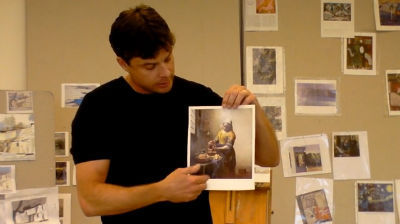
Sept 10, 24
Oct 8, 22
Nov 5, 19
Regular Tuition Fee is $690.00
Almost half the spots are already taken. Full payment secures your place in the group.
contact the studio by email to register: david@davidmichaelslonim.com
EARLY REGISTRATION DISCOUNT!
Pay in full by August 15: $635.00
Save More- Bring a friend (first time student): $517.00 25% OFF
……………………………………………………………………………….
YOU CAN PAINT BETTER THAN YOU THINK YOU CAN.
This course will emphasize:
1) Quantity of work
To produce good work we must produce a lot of work.
2) Building on your personal strengths as an artist
Paint YOUR paintings the way ONLY YOU can paint them.
3) Setting goals and planning action steps to meet them
We’ll talk about about how to get there from here.
GOOD NEWS: YOU HAVEN’T DONE YOUR BEST WORK YET!
We will also discuss what I’ve been learning about
Finding your audience:
marketing insights,
web site design,
juried shows,
galleries
PAINTING DURING CLASS TIME | POWER POINT PRESENTATIONS | CRITIQUES | DEMOS
- You will decide what to paint (you can work from photos, sketches, plein air paintings, or still life objects.)
- You will decide how you want to paint. (representational, abstract, tight, loose… the goal is to be yourself)
…………………………………………………………………………………….
FEEDBACK from artists who have studied with David:
“The best workshop I’ve ever taken.” – J.K.
“You are very encouraging. I appreciate the tone you set and the atmosphere.” -J.D.
“Strengths as a teacher: intelligence, hard work, sense of humor, humility.
I told Bonnie on the last day of class that I feel very lucky to study with you.” – L.W.
“The strength of the design and composition in these classes has not been equaled or even approached in other classes and workshops I’ve taken.” – G.H.
“I have been so hungry for the information that you are sharing. You are a fun teacher and
you give so much. Without a doubt you have been the best art teacher I
have ever had. “ – J.L.
“Dude, you are seriously bending my mind.” – P.K.

July 3, 2014
I KNOW AN OLD LADY WHO SWALLOWED A DREIDEL
June 21, 2014
Painting Workshops With David Slonim
Contact the studio for information on upcoming workshops.

January 27, 2013
Creative Rhythm / Peaks and Valleys

Grand Teton National Park, July 2012
Are you learning your personal rhythms? For me, this continues to be one of the most difficult aspects of the creative life. Nothing is static- talent, energy, optimism, ideas, hand skills… everything ebbs and flows. The flowing part is great. I love that.
What about the ebbs? After a quarter century of image making, a few things are becoming clear. I need to remind myself of them, so I’ll share them here in case you might be encouraged, too.
1) Expect the rhythms of life- times of filling up and times of pouring out.
I can plan on January being a harder month than May. Creative energy has ups and downs, like everything else in life. Are you wisely accommodating your personal rhythms? Are you avoiding feeling bad about yourself for having them?
Are you giving yourself permission to have a season of renewal?
I can’t produce art all the time without burning out. The creative well must be replenished from time to time. Are you giving yourself permission to take time off? Time to read, watch instructional videos, go to museums? Time to daydream?
Sometimes the best way to grow as a painter is to stop painting for a while.
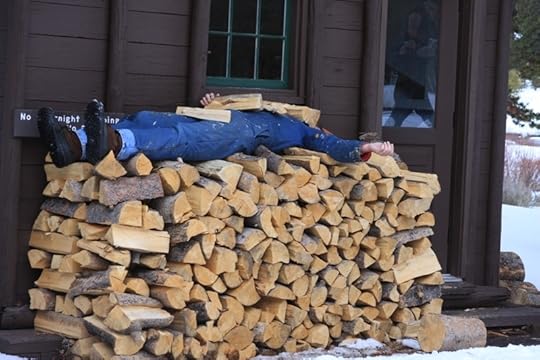
Resting in Yellowstone, 2010
2) A peak must be reached by climbing
Peak performance is made possible by the climbing we do to reach the peak. Are you expecting periods of time spent feeling awkward, unable to control the paint, or stumbling around searching for an idea? Even wondering if you have any talent after all? Climbing is hard.
In those seasons, I need to think, “Oh yeah, this again. Right on schedule.”
3) Peaks cannot be maintained indefinitely
If growth is the goal, we have to leave the last peak to reach the foothills of the next one. Sorry, self, but we’re moving on toward higher peaks, which means that in between you may experience some valleys. So grab some trail mix and let’s go.
(Yes, self, I’m saying that going higher is going to sometimes feel like going lower on the way.
Any questions?)
Onward and upward.
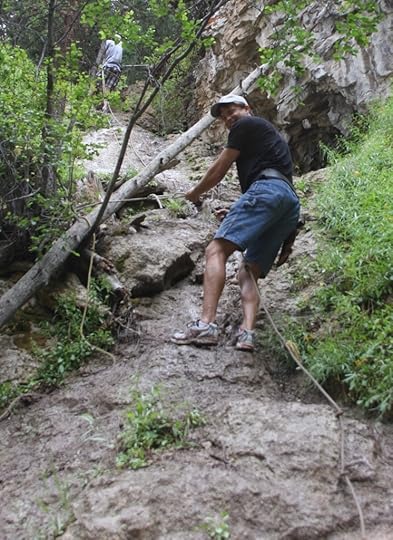
Hiking in Dubois, WY July 2012

January 11, 2013
I LOATHE YOU Movie Theater Ad
Here’s a movie theater ad which will run at various National Amusement theaters. Pretty cool!
Thanks to all the folks at Simon & Schuster who work to make stuff happen.
Available at AMAZON.COM

David Slonim's Blog
- David Slonim's profile
- 25 followers





